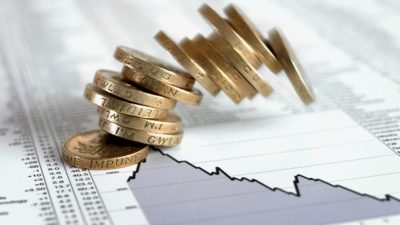Saving £15,000 is no easy feat. So if I managed to reach that milestone, I’d want to make sure I put my hard-earned cash to work. That’s why instead of leaving it sitting in the bank, I’d start to generate a second income.
To do that, I’d start snapping up stocks with chunky dividend yields. It’s a method I’ve been using since I started my investment journey. So with £15,000, here’s what I’d do.
Stocks and Shares ISA
I’d kickstart the process by opening a Stocks and Shares ISA. Every year, UK investors have a £20,000 limit to invest in their ISA. The main benefit is that of the profits made, not a penny’s paid in tax.
Should you invest £1,000 in M&G right now?
When investing expert Mark Rogers has a stock tip, it can pay to listen. After all, the flagship Motley Fool Share Advisor newsletter he has run for nearly a decade has provided thousands of paying members with top stock recommendations from the UK and US markets. And right now, Mark thinks there are 6 standout stocks that investors should consider buying. Want to see if M&G made the list?
Please note that tax treatment depends on the individual circumstances of each client and may be subject to change in future. The content in this article is provided for information purposes only. It is not intended to be, neither does it constitute, any form of tax advice. Readers are responsible for carrying out their own due diligence and for obtaining professional advice before making any investment decisions.
Picking the right stocks
Next, I’d start researching what sort of companies I want to hold in my ISA. I like FTSE 100 companies. They’re often household names. They have proven business models. And they also have stable cash flows. That’s important when it comes to paying dividends.
One I’m particularly a fan of is M&G (LSE: MNG). It hasn’t been a great year for the stock. It’s down 6.9% in 2024. That said, its shares have returned 4.7% over the past 12 months.
One positive of its weak share price performance is that it has pushed its yield higher. As I write, it sits at a whopping 9.5%.
I must make it clear that dividends are never guaranteed. But since listing five years ago, M&G’s increased its dividend payout every year. It aims to keep up this trend.
What I also like about M&G is that it operates in a massive industry. It has nearly 5m customers as well as over 900 institutional clients. Last year, it reported a £797m adjusted operating profit.
Of course, I do see some risks with the stock. We’re not out of the woods yet with inflation and interest rates remain high. The uncertainty doesn’t bode well for M&G. In fact, it has the potential to lead to customers pulling money out of funds, something we’ve seen occur over the past couple of years.
But over the long run, I back M&G to perform. What’s even better is that I can snag its shares now trading on just 8.5 times forward earnings. That looks cheap.
Crunching the numbers
Taking M&G’s yield and applying it to my £15,000 would allow me to earn £1,425. That would come in handy. But I’m aiming for more.
That’s why I’d reinvest every dividend I received. From that, I’d benefit from the process of ‘dividend compounding’. It’s a key method I have been using to build my wealth.
By doing that, as well as utilising the power of time in the stock market, after 30 years my £15,000 could be generating £23,152 a year as a second income. What’s more, my nest egg would have grown to over £256,423.
That said, I’d never invest in just one company. Diversification is key to any successful portfolio. However, this is proof that selecting the right stocks has the potential to produce a juicy second income over the long run.








